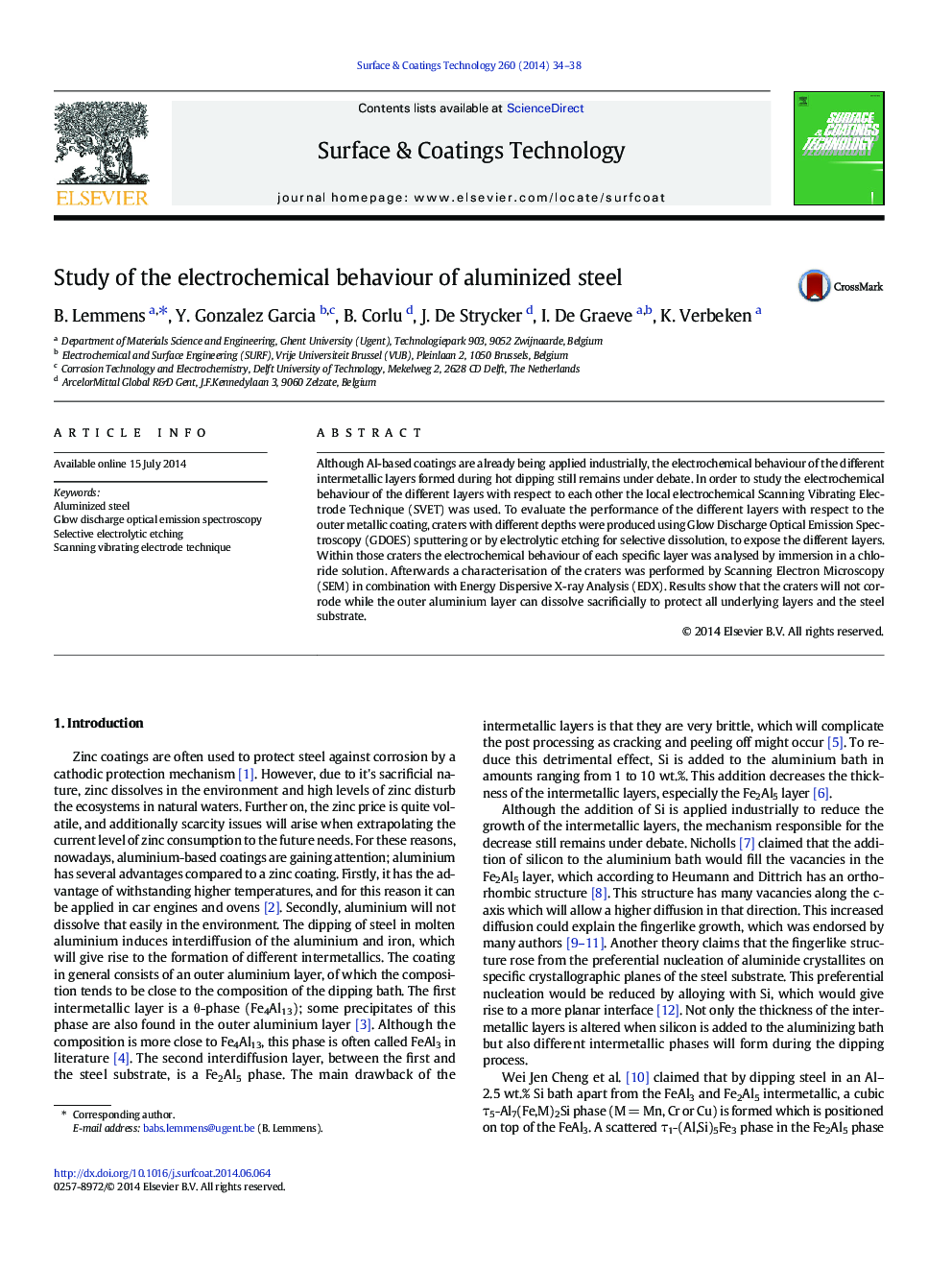| Article ID | Journal | Published Year | Pages | File Type |
|---|---|---|---|---|
| 8026861 | Surface and Coatings Technology | 2014 | 5 Pages |
Abstract
Although Al-based coatings are already being applied industrially, the electrochemical behaviour of the different intermetallic layers formed during hot dipping still remains under debate. In order to study the electrochemical behaviour of the different layers with respect to each other the local electrochemical Scanning Vibrating Electrode Technique (SVET) was used. To evaluate the performance of the different layers with respect to the outer metallic coating, craters with different depths were produced using Glow Discharge Optical Emission Spectroscopy (GDOES) sputtering or by electrolytic etching for selective dissolution, to expose the different layers. Within those craters the electrochemical behaviour of each specific layer was analysed by immersion in a chloride solution. Afterwards a characterisation of the craters was performed by Scanning Electron Microscopy (SEM) in combination with Energy Dispersive X-ray Analysis (EDX). Results show that the craters will not corrode while the outer aluminium layer can dissolve sacrificially to protect all underlying layers and the steel substrate.
Keywords
Related Topics
Physical Sciences and Engineering
Materials Science
Nanotechnology
Authors
B. Lemmens, Y. Gonzalez Garcia, B. Corlu, J. De Strycker, I. De Graeve, K. Verbeken,
